This newly acquired collection contains 23 letters written from October 1943 to June 1944 by Hertford students to the College Chaplain, Revd Ian Thomson. During the war years Revd Thomson acted as the focal point for collecting and disseminating news about Hertford students & staff which he used to compile printed newsletters which were posted out all over the world.
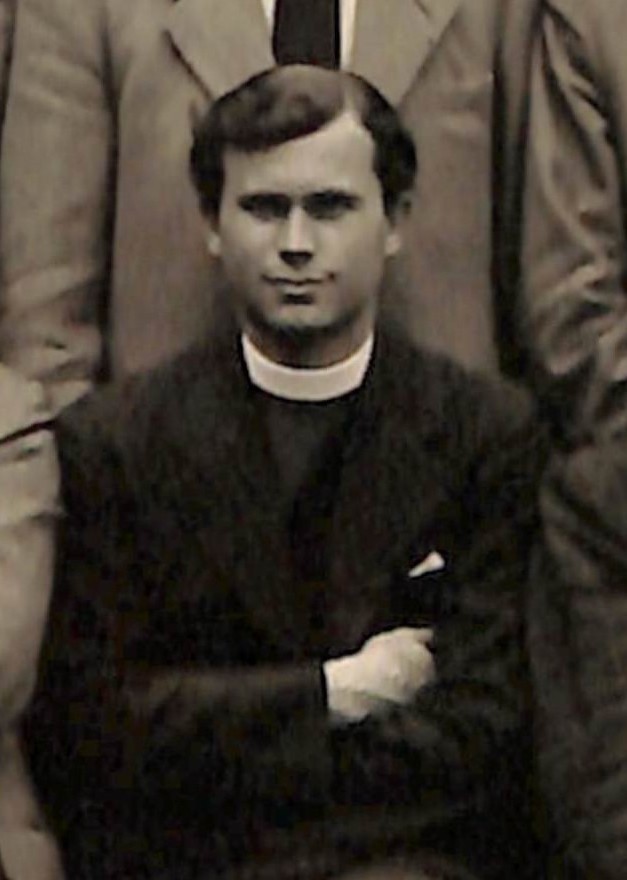
George Ian Falconer Thomson was Hertford College’s Chaplain from 1937 to 1946 and a hugely influential figure in college life. Born in China to missionary parents, he was educated at Balliol College, Oxford and trained for ordination at Westcott House in Cambridge. After serving as a curate in London he came to Hertford in 1937. He was committed to the Ecumenical movement & along with other Hertford members participated in international church conferences before the war. In 1943 Revd Thomson left Hertford to serve as an Air Force Chaplain in the Middle East, somehow managing to still receive and collate the letters; although the task of sending out the printed newsletter fell to the Bursar W. L. Ferrar.
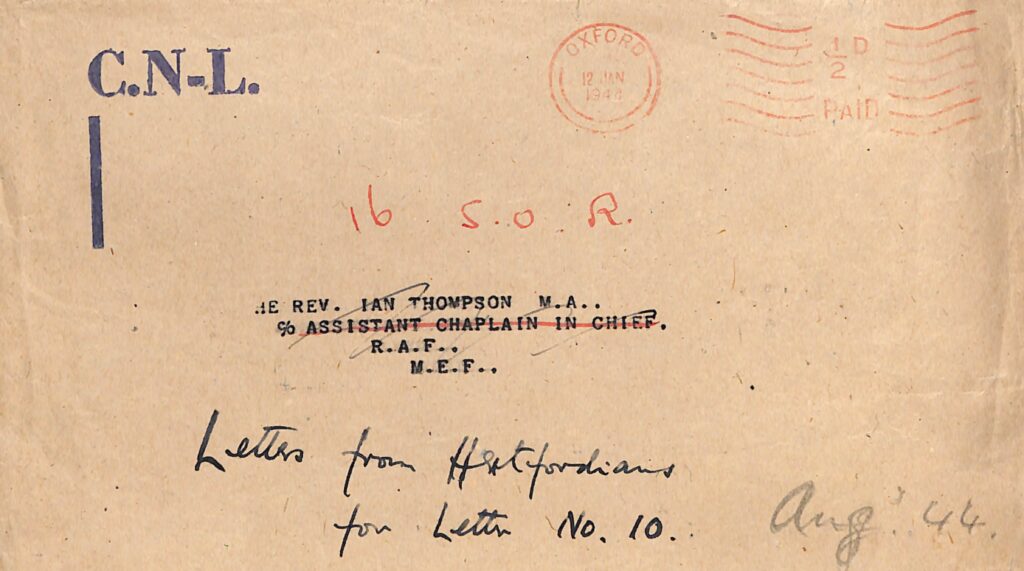
Revd Thomson’s primary concern was to preserve the sense of community amongst the ‘college vintage of 1937-1941’, as it was hoped that these students would be able to return to Hertford at the end of the war. The writers of this set of letters matriculated between 1935 and 1941. Although by 1944 many of them would have taken part in some of the most difficult campaigns of the war, they are on the whole remarkably cheerful and humorous; mainly confined to factual accounts of their activities, plus passing on and asking for news of their friends. This is not so surprising as they had to be mindful of the censor but perhaps the reality of the fighting was too much to relay to the home community.
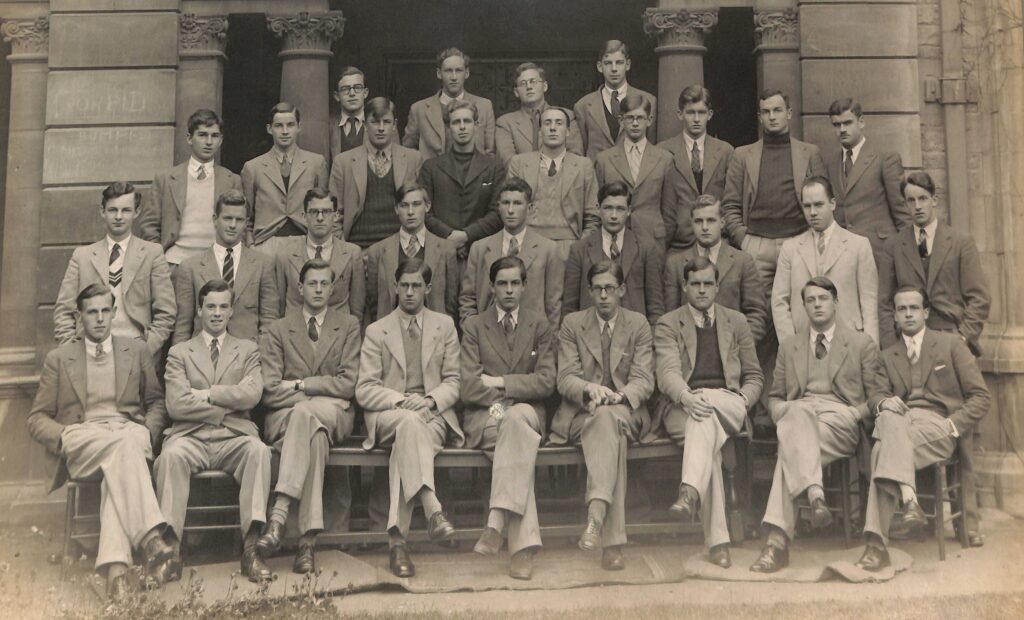

The letters demonstrate the wide range of occupations in which Hertford students participated and in almost every part of the theatre of war – the Middle East, North Africa, Italy and India. Alec Strahan (matriculated 1937) wrote to Thomson, urging him to visit St Catherine’s monastery in Sinai: ‘Of all the places I visited in the ME, it left the deepest impression, and my travels covered from Aleppo to Eritrea and out into the western desert and back.’ Arthur Marsh (m. 1940) described himself as:
‘wandering in the Promised Land, which, I’m told, covers the area between the Euphrates an the Tigris as well as the more westerly provinces… I’ve frozen in the desert, cooked in the sun, and been plagued by almost all the plagues of Egypt (though I don’t recall where I found the frogs!).’
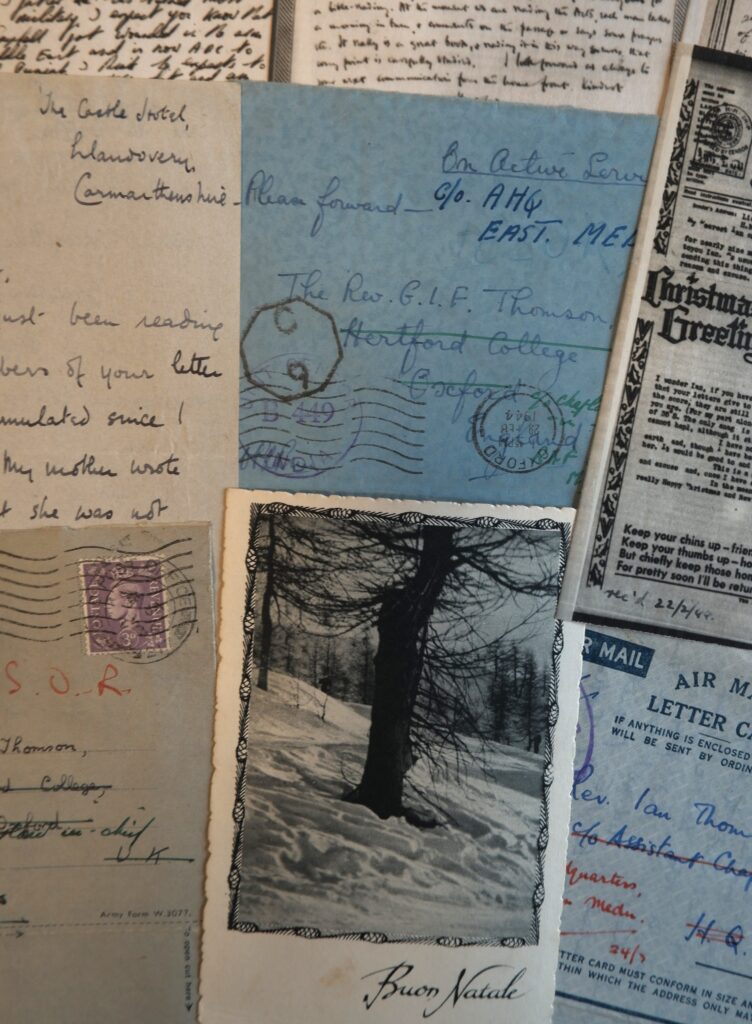
Anthony Gowan (m. 1936), a Captain in the 2nd Battalion of the Burmese Rifles, had been stationed in Calcutta but was by now ‘in our training camp in the jungle, in shorts, shoes and Ghurka hat, getting the body really limbered up for marching “under load”’.
By this stage of the war many of the army combatants who had been stationed in North Africa were fighting their way through Italy; Alec Strahan wrote that it seemed to be ‘rather full of Hertford faces’. A number of former students had taken part in the coastal landing at Salerno. Bertram Wolffe (m. 1941) wrote: ‘Since our beach landing at Salerno which was my first experience of action I have managed to see most of that part of Italy which can be seen at present – had this experience been prior to my all too short stay at Hertford I might have taken a little more interest in Mr Hignett’s Latin tutorials I expect!’.

Stephen Adams (m. 1937), who was a Quaker and pacifist, volunteered in Palestine and the Mediterranean with the Friends Ambulance Unit (FSU) which had been reformed by the Society of Friends in 1939. A number of Hertford students worked for the colonial services. Jim Coode (m. 1937) served with the Colonial Service in the Gilbert Islands until he evaded the Japanese invasion in 1941, transferred to the Ellis Islands and then to Fiji. Paul Lloyd Price (m. 1938) and David Alexander (m. 1936) both served with the Indian colonial service in Bombay, Bengal and Calcutta; Lloyd-Price being deployed to Calcutta to organise relief work during the Bengal famine.
Only one of the correspondents in this collection, Norman Sellers (m. 1938) enlisted with the Navy, serving as a gunnery officer on HMS Nelson, commanded HMS Periwinkle and saw action in the Malta convoys. Nearer to home, Robin Miller (m. 1935) became an aerial photographer with the RAF, despite, as he wrote, knowing nothing more about photography ‘apart from a few experiments in the cellar at home with films from a Box Brownie’. Tom Langton-Lockton (m. 1936) served with the Royal Army Service Corps and wrote that he was ‘stuck out here with a party of soldiers who are lifting sugar beet, and enjoying it.’ Alan Wheeldon (m. 1941) stayed in the UK and worked for the Cossor Laboratory which produced vital radar equipment. Keith Wedgewood (m. 1939) was ordained in 1943 and worked as a curate in Hartlebury near Kidderminster.

Accidental encounters between Hertford students were not uncommon and were frequently reported to Thomson for inclusion in his newsletters. Robert Smith (m. 1937) and Alec Strahan were both stationed in Palestine and unexpectedly bumped into each other outside the King David’s Hotel in Jerusalem in the autumn of 1943. Strahan also reported that he had visited Tom Boase, who had been a Fellow and tutor at Hertford before the war and was now in charge of the British Council in Cairo – ‘he had his knee in plaster when I saw him, having falling down a man-hole in Haifa not long before’. Kenrick Armitstead (m. 1940), stationed in Italy, wrote that ‘Some nights ago we were busy working out a barrage programme when in walked Bernard Roe – when I had last seen in England nearly a year ago, now a liaison officer’. Michael Harker, who had been transferred to a hospital in Tunisia after being wounded in Salerno, wrote that:
‘I also have had several “collisions”, the first being with Henry Evans who, at the risk of holding up an already thoroughly congested and all but stationary stream of traffic…. invited me into his command post for a drink. Subsequently I met Ivan Jones and Pratt, inevitably in the foyer of the Hotel in Tunisia where everybody meets everybody. A Gunner Captain came in to visit one of the other officers in my ward, and I later discovered that it was Orde’.
A number corresponded about more spiritual matters; several mentioning that they were managing to take theological courses and two that they intended to be ordained after the war. Kenrick Armitstead reported from Italy that he was taking a course for ordinands, ‘so I spend my time in between battles and during periods of night-duty in a certain amount of preparatory reading – Greek text, doctrinal theology, and old testament history… ‘.

The printed newsletters were clearly a lifeline for the Hertford undergraduates, removed abruptly from college life and sent into the unknown. In the days before mobile phones, email or social media, information was passed on via friends and family members and the letters acted as a vital point of connection to their friends and college. Revd Thomson was ideally placed to maintain this connection. As Ferrar wrote in one of the later newsletters, it was Thomson who wrote with ‘his own very special knowledge of you all, your likes and dislikes, your individual abilities and, at times, your individual undergraduate escapades that remained unknown to other dons.’
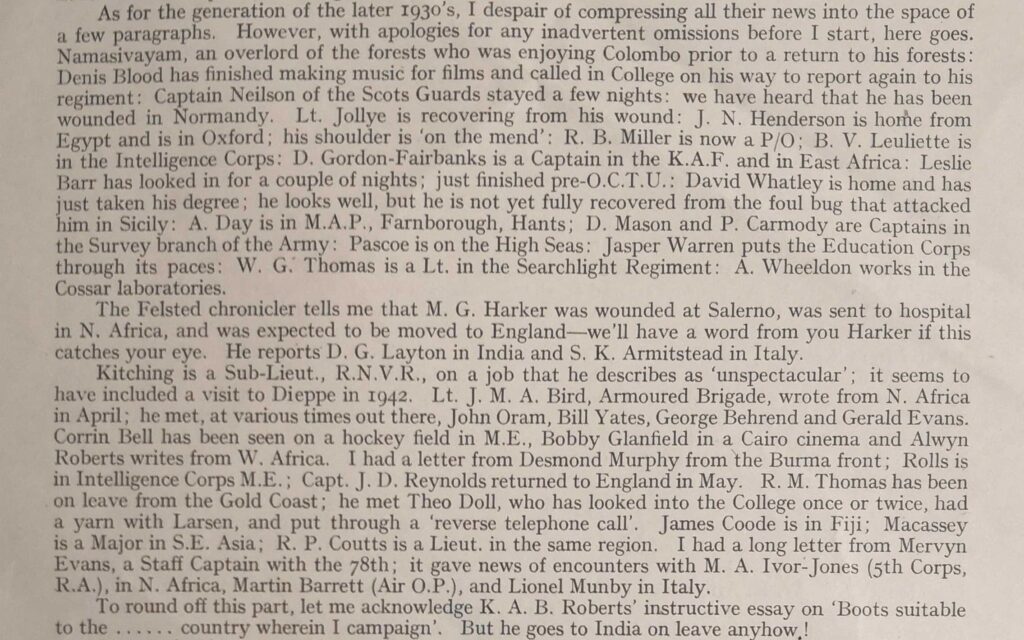
It must have been a painstaking task, as it seems that Revd Thomson replied individually to each letter, and then had to produce a newsletter which would pass the censor. He was also careful to guard against misinformation, particularly where it related to potential casualties, and verified the information sent to him where possible. Their gratitude for the effort that went into producing the newsletters is evident. Keith Wedgewood wrote: ‘I hope you have met many Hertford men, wherever you are, to revive old times & give an impetus to victory, so that we can all meet again, even if many of the men whom you mention are not known to the 1939-42 lot of undergrads. It is the mention of things like “Hall”, Chapel, study groups, the College barge, Sunday teas & punting on the Cher which revives old memories & unites us’. Robert Smith wrote from Egypt: ‘Your letter of September has just arrived, & revives for me a lot of memories; & made me at once anxious to contribute a little to the good work of maintain some connection between what you call “the college vintage of 1937-42”’.
John Poole-Hughes (m. 1936) had been captured in Italy in 1942 but had managed to escape a year later and make his way back to Britain. One of his first acts was to write to Thomson: ‘I have just been reading up the back numbers of your letter which have accumulated since I was in the ‘bag’ – my mother wrote extracts to me but she was not allowed to forward the printed letter. I find the letters a great source of inspiration as well as extremely interesting from the point of view of keeping me in touch with my contemporaries.’
Ian Barrett, stationed in North Africa, summed up the general feeling:
‘I wonder Ian, if you have any idea of the amount of thrill (and, alas, nostalgia) that your letter give to those of us who receive them? Albeit they are printed by the score, they are still essentially from you and simply wonderful to read, wherever you are’.
Altogether 72 Hertford students were killed on active service and one civilian student died in a Japanese internment camp. All of these particular correspondents survived the war, and many returned to complete their degrees after 1945. Revd Thomson returned to Hertford but left to take up a parish post in 1946. That the students clearly felt themselves to be part of an ongoing community, even though some of them had not been at Hertford for very long, is a tribute to the pastoral care and leadership shown by Revd Thomson throughout the difficult war years.
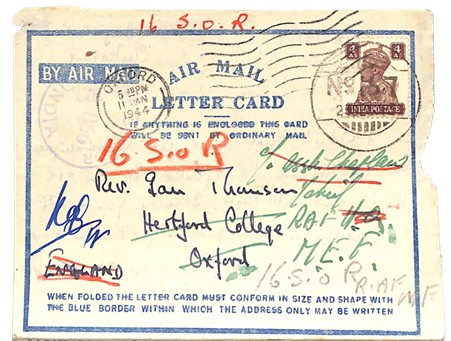
We are delighted to have been offered this donation by Prof Richard Thomson, Revd Ian Thomson’s son. Please visit our website pages for information on our collection policy and donating to the archives.
All images are of items in Hertford College Archives unless otherwise credited. Visit our online catalogue to discover more about records in our collections relating to the Second World War.
See our website for further information about our Library & Archive Redevelopment Project

